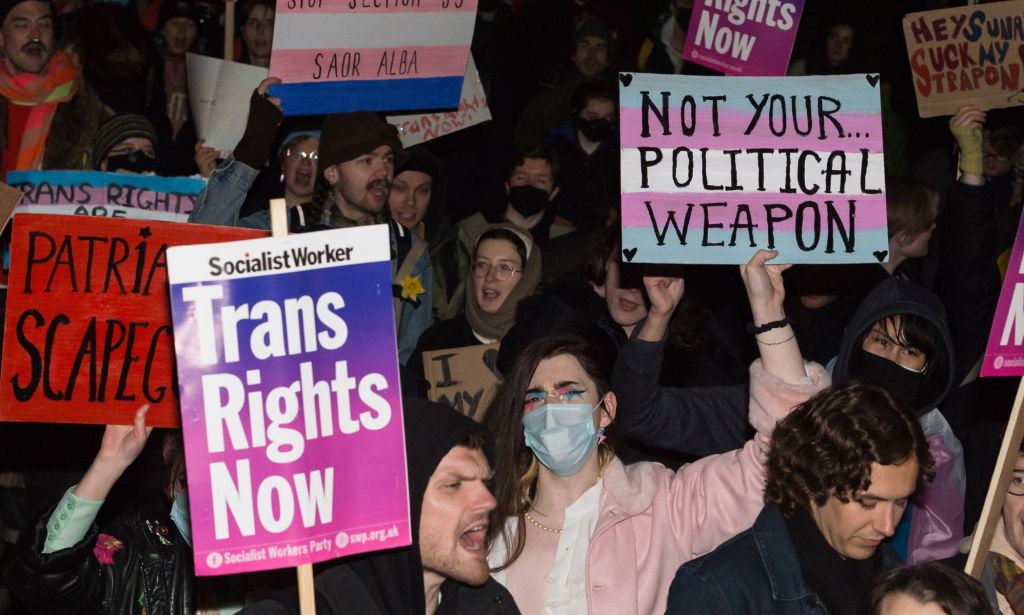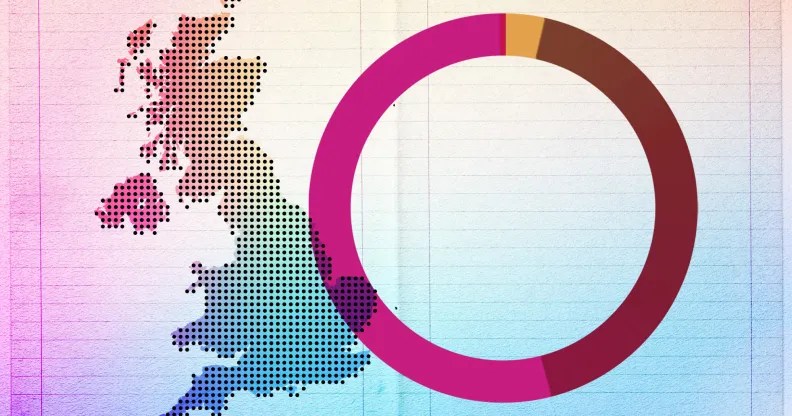Size of Scotland’s LGBTQ+ population revealed for first time in ground-breaking new census data

Scotland’s LGBTQ+ population has been revealed (Canva)
Scotland's LGBTQ+ population has been revealed (Canva)
The size of Scotland’s LGBTQ+ population has been revealed for the first time, as results from the ground-breaking 2022 census are published.
Data published by National Records of Scotland from the census, which was conducted in 2022, found almost 184,000 people in the devolved nation are LGB, representing four per cent of people aged 16 and older.
Within that total, 80,100 (1.76 per cent of those aged over 16) identified as gay or lesbian, 80,260 (1.76 per cent of over-16s) described themselves as bisexual and 23,500 (0.51 per cent) chose another sexual orientation, such as pansexual, asexual or queer.
Alongside voluntary questions about sexuality, the census collected trans data for the first time, with close to 20,000 people in Scotland describing themselves as transgender or as having a trans history, which equates to 0.44 per cent of people aged at least 16.
On average, more than four in every 10 (46.1 per cent) trans men and women were aged 16 to 24, while 26 per cent were between the ages 25 and 34.

The data also showed the areas with the highest LGBTQ+ populations.
The council areas that were found to have the highest percentage of LGB+ people relative to their overall population were Edinburgh (7.6 per cent), Glasgow (7.1 per cent), Dundee (6.6 per cent) and Aberdeen (5.2 per cent).
The Dundee City Council area also had the highest percentage of trans people relative to their overall population aged 16 and older (0.91 per cent), followed by Edinburgh and Glasgow (both 0.77 per cent) and Aberdeen (0.58 per cent).
Director of census statistics Jonathan Wroth-Smith said: “This is the first time Scotland’s census has collected data on trans status or history and sexual orientation. We can now say that almost 20,000 people aged 16 and over in Scotland identified as being trans or having a trans history and almost 184,000 people aged 16 and over identified as LGB+.
“These numbers will help charities, local authorities, businesses and government plan services to improve the lives of those living and working in Scotland, as well as providing important information for effective equality monitoring.”

The statistics for Scotland follow those released for England and Wales, which found around 1.5 million people (3.2 per cent) identified as LGB+. A total of 748,000 of those described themselves as gay or lesbian, 624,000 said they were bisexual and 165,000 selected “other sexual orientation”.
While 262,000 people ticked “no” to the question: “is the gender you identify with the same as your sex registered at birth?”, 118,000 did not clarify their trans identity. The number or trans men was the same as trans women, 48,000, and 30,000 identified as non-binary.
There was some controversy around the data, particularly because it was found that some areas with large ethnic minority groups – where many people speak English as a second language – had a higher transgender population than the researchers were expecting.
However, advocacy groups believed the figures could be an underreporting because the gender identity question was voluntary and people who are not out might have been fearful about filling in an official document.
Equalities minister Kemi Badenoch called an investigation into the figures, saying: “We need to be very careful about the language, people don’t often understand what we mean when we use terms like ‘transgender’ [and] ‘gender identity’, we’ve got to make sure they understand that.”
However, the Office for National Statistics said it was “confident” about its national figures for the trans population shown in the 2021 census, but admitted some people with lower English skills may not have “interpreted the question as intended”.

